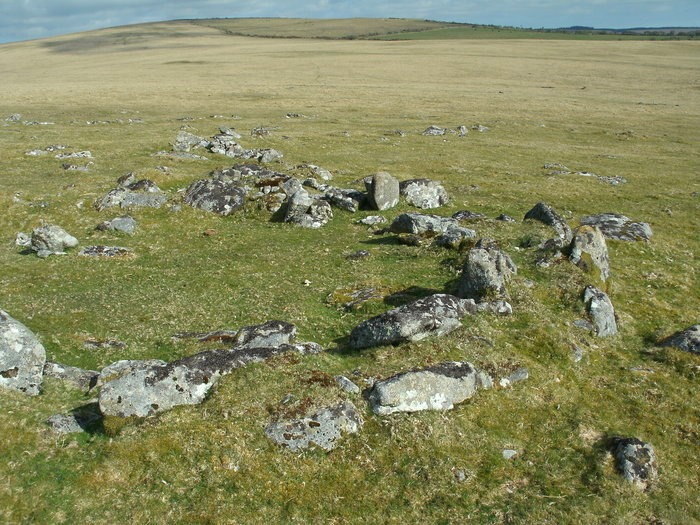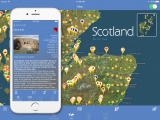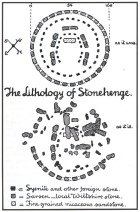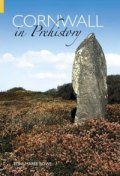<< Our Photo Pages >> Leskernick Hill Settlement - Ancient Village or Settlement in England in Cornwall
Submitted by TheCaptain on Wednesday, 14 June 2017 Page Views: 9358
Neolithic and Bronze AgeSite Name: Leskernick Hill SettlementCountry: England County: Cornwall Type: Ancient Village or Settlement
Nearest Town: Launceston Nearest Village: Bolventor
Map Ref: SX18358000
Latitude: 50.591396N Longitude: 4.567705W
Condition:
| 5 | Perfect |
| 4 | Almost Perfect |
| 3 | Reasonable but with some damage |
| 2 | Ruined but still recognisable as an ancient site |
| 1 | Pretty much destroyed, possibly visible as crop marks |
| 0 | No data. |
| -1 | Completely destroyed |
| 5 | Superb |
| 4 | Good |
| 3 | Ordinary |
| 2 | Not Good |
| 1 | Awful |
| 0 | No data. |
| 5 | Can be driven to, probably with disabled access |
| 4 | Short walk on a footpath |
| 3 | Requiring a bit more of a walk |
| 2 | A long walk |
| 1 | In the middle of nowhere, a nightmare to find |
| 0 | No data. |
| 5 | co-ordinates taken by GPS or official recorded co-ordinates |
| 4 | co-ordinates scaled from a detailed map |
| 3 | co-ordinates scaled from a bad map |
| 2 | co-ordinates of the nearest village |
| 1 | co-ordinates of the nearest town |
| 0 | no data |
Internal Links:
External Links:
I have visited· I would like to visit
Vandora would like to visit
TheCaptain has visited here

There are also several cairns, some with kerbs and cists.
Note: Exploring multi-sensory archaeological landscapes - virtual reality roundhouses at Leskernick Settlement, a kind of experimental location-based 'smellyvision' at Moesgård Museum and lots more digital creativity in the latest issue of Internet Archaeology, see the comments on our page
You may be viewing yesterday's version of this page. To see the most up to date information please register for a free account.










Do not use the above information on other web sites or publications without permission of the contributor.
Click here to see more info for this site
Nearby sites
Key: Red: member's photo, Blue: 3rd party photo, Yellow: other image, Green: no photo - please go there and take one, Grey: site destroyed
Download sites to:
KML (Google Earth)
GPX (GPS waypoints)
CSV (Garmin/Navman)
CSV (Excel)
To unlock full downloads you need to sign up as a Contributory Member. Otherwise downloads are limited to 50 sites.
Turn off the page maps and other distractions
Nearby sites listing. In the following links * = Image available
135m NNW 335° Leskernick 2* Natural Stone / Erratic / Other Natural Feature (SX1829880125)
177m SSW 194° Leskernick cist* Cist (SX18307983)
214m NNW 339° Leskernick Quoit* Natural Stone / Erratic / Other Natural Feature (SX1827980202)
243m ESE 107° Leskernick NW* Stone Circle (SX18587992)
351m N 353° Leskernick Hill cairn* Cairn (SX18328035)
375m ESE 117° Leskernick cairn* Cairn (SX18687982)
411m ESE 117° Leskernick* Ancient Village or Settlement (SX18717980)
511m E 101° Leskernick Hill Row* Stone Row / Alignment (SX1884979885)
591m SE 126° Leskernick SE* Stone Circle (SX18827964)
1.1km NE 47° Westmoor Cairns* Cairn (SX19178070)
1.2km SSE 154° Trezelland stone setting* Standing Stones (SX18857889)
1.4km ESE 111° The Beacon Cist* Cist (SX19667944)
1.5km ESE 117° The Beacon Cairns* Cairn (SX19677928)
1.5km SE 126° Elephant Rock* Natural Stone / Erratic / Other Natural Feature (SX19557905)
1.8km SW 216° Catshole Quoit* Chambered Tomb (SX17227856)
1.9km NE 53° West Moor Possible Menhir* Standing Stone (Menhir) (SX1987081077)
1.9km NNW 330° Buttern Hill Cairns* Cairn (SX17478167)
2.0km ENE 67° Westmoorgate circle* Stone Circle (SX20258073)
2.0km ENE 63° Westmoorgate cairn* Cairn (SX2020680866)
2.1km SSW 212° Catshole Downs long cairn* Chambered Cairn (SX172783)
2.2km NW 318° Buttern Hill row* Stone Row / Alignment (SX1695681658)
2.2km NNE 12° Bray Down Cairns* Cairn (SX18908216)
2.3km SSW 200° Tolborough Tor Cairn* Cairn (SX175779)
2.3km S 185° Tolborough Standing Stone* Standing Stone (Menhir) (SX1807877741)
2.3km SSW 199° Tolborough Tor stone row* Stone Row / Alignment (SX17547787)
View more nearby sites and additional images






 We would like to know more about this location. Please feel free to add a brief description and any relevant information in your own language.
We would like to know more about this location. Please feel free to add a brief description and any relevant information in your own language. Wir möchten mehr über diese Stätte erfahren. Bitte zögern Sie nicht, eine kurze Beschreibung und relevante Informationen in Deutsch hinzuzufügen.
Wir möchten mehr über diese Stätte erfahren. Bitte zögern Sie nicht, eine kurze Beschreibung und relevante Informationen in Deutsch hinzuzufügen. Nous aimerions en savoir encore un peu sur les lieux. S'il vous plaît n'hesitez pas à ajouter une courte description et tous les renseignements pertinents dans votre propre langue.
Nous aimerions en savoir encore un peu sur les lieux. S'il vous plaît n'hesitez pas à ajouter une courte description et tous les renseignements pertinents dans votre propre langue. Quisieramos informarnos un poco más de las lugares. No dude en añadir una breve descripción y otros datos relevantes en su propio idioma.
Quisieramos informarnos un poco más de las lugares. No dude en añadir una breve descripción y otros datos relevantes en su propio idioma.